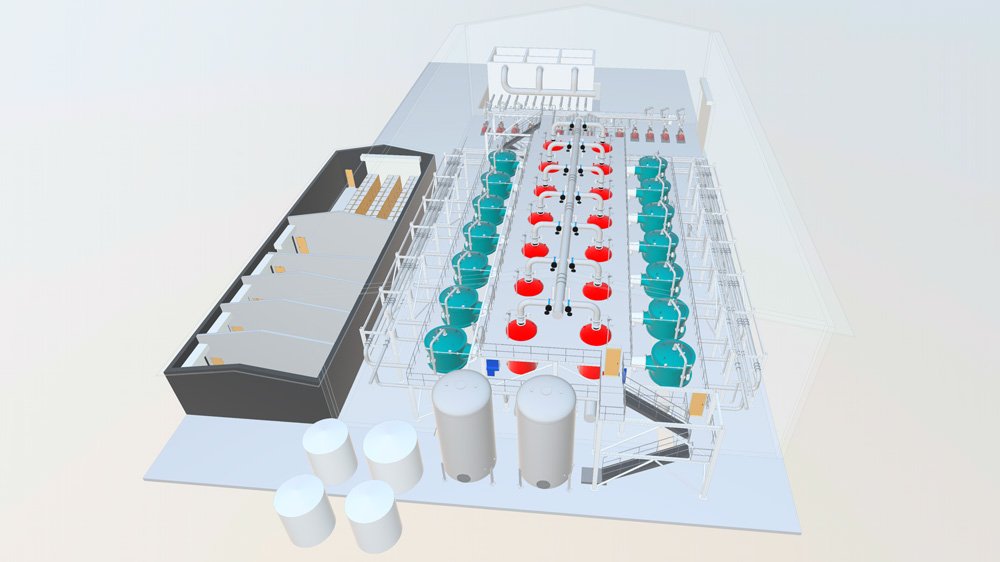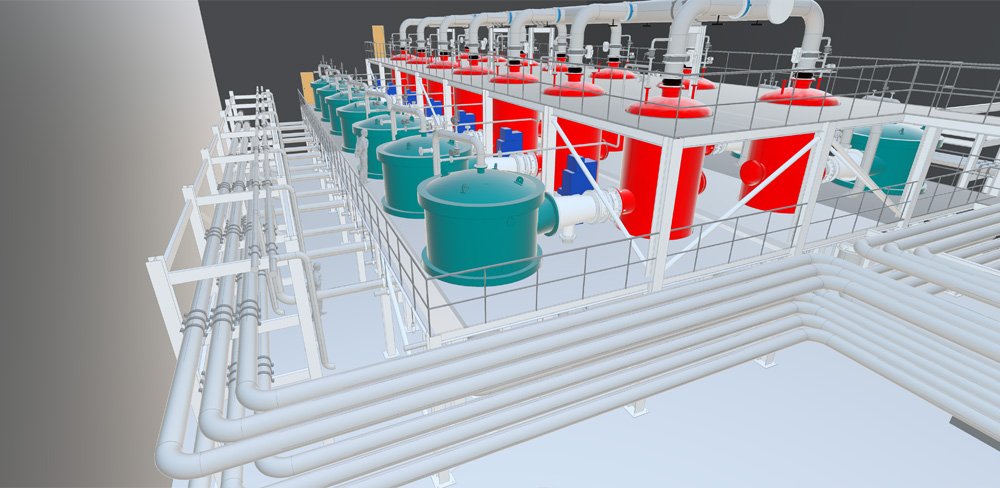CeraMac® is a microfiltration filter system with a nominal pore size of 0.1 um. The membrane is supplied by Metawater (NGK) of Japan. This process will serve as the filtration barrier to meet finished water turbidity limits. The CeraMac® is also credited with 4.0 log Cryptosporidium, 4.0 log Giardia, and 1.0 log virus removal.
CeraMac® operates with multiple membrane elements in a single vessel. Flocculated water from the ILCA® will enter the CeraMac® system, were particulates and turbidity will be removed. The CeraMac® system will be backwashed based on a loading to the system and a chemically enhanced backwash (EBW) regime with chlorine washes and acidic peroxide washes will be used to help control fouling during operation. Clean-in-place (CIPs) will be performed with traditional CIP chemicals: chlorine and acidic peroxide.
The CeraMac® system is proven to be a sustainable filtration system for surface water plants. This is due to several features which are optimized to minimize the emissions over the life of the plant. First, the CeraMac® system is designed to match the expected life of the ceramic membrane. In practice, this is >20 years, based on the oldest membranes in operation by Metawater being nearly 25 years old and still in operation. The CeraMac® vessel and internals are also durable, and expected to be in operation over this time span. Second, the energy use of the CeraMac® is low compared to other filtration systems. With optimised pretreatment, the fouling can be minimised, thus also minimising the energy use for pumping water through the membranes. The CeraMac® uses a high pressure backwash (at up to 5 bar), and this provides a rapid and extremely effective backwash of the membranes. This translates into less downtime for backwashing and better performance recovery after backwashing (availability generally >95%). The air-spring backwash of the CeraMac® is also more energy efficient than a pumped backwash, because the air pressure is not lost during operation, and only a low energy use is needed to maintain the system air-spring. Finally, the components of the CeraMac® system are nearly 100% recyclable. There are no plastic components or unique potting materials that cannot be recycled.
ILCA® is the flocculation mixing stage after coagulant and pH control chemicals are added. Coagulation will remove a fraction of DOC as well as colour, which will assist with meeting DBP regulatory limits and will help achieve optimized operation of the UV system (reduces plant power usage).
ILCA® was developed by PWNT as a pre-treatment flocculation for CeraMac® filtration. Coagulation is provided upstream via a static mixer or an overflow weir for chemical mixing, and the flocculation occurs in the ILCA®. It is not necessary to form large, settleable flocs for filtration by CeraMac®, so smaller pin flocs are acceptable. These are formed in ILCA® which has a shorter residence time compared to conventional flocculation systems. ILCA® has no stirrers or mechanical moving parts, but instead uses specially designed removable plates to create the G-values that are needed. This means there is no energy use for the ILCA® system. The ILCA® can be pressurised or in tanks/towers open to the atmosphere. The design and options for the ILCA® offer a lower capital and operating cost, a smaller footprint, and lower maintenance tasks when compared to traditional flocculation options.




